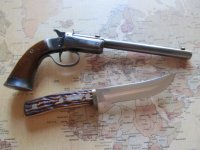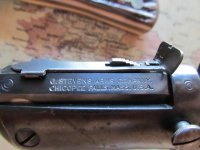wachtelhund1
New member
Hello, I was browsing in General Handgun and saw another post on Single Shot Pistol, didn't want to hi jack it so I started my own.
I picked this Stevens model 43 .22lr pistol up at a garage sale about a month ago. Owner wanted $200.00 for it. After looking at for a while I decided to buy it and got it for $185.00. It is in very good condition, tight action, very good bore, exterior metal and wood are good for a 110 year old gun. Haven't done anything to it. I did fire it at 20 yards, held 20 low velocity shots within a 2.5" group. It is very small, I have a picture of it with a Beretta Mod. 70 .22lr pistol which is also small. Barrel is 6" long and it weighs 10 ounces.
I new it was old, but not how old. The butt sold me. You see people in western movies nailing and tacking flyers with the butt of their pistol. This butt was used that way.

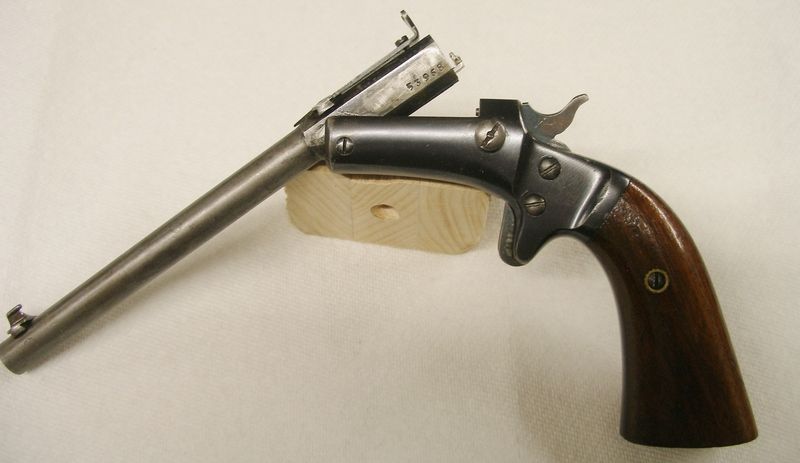
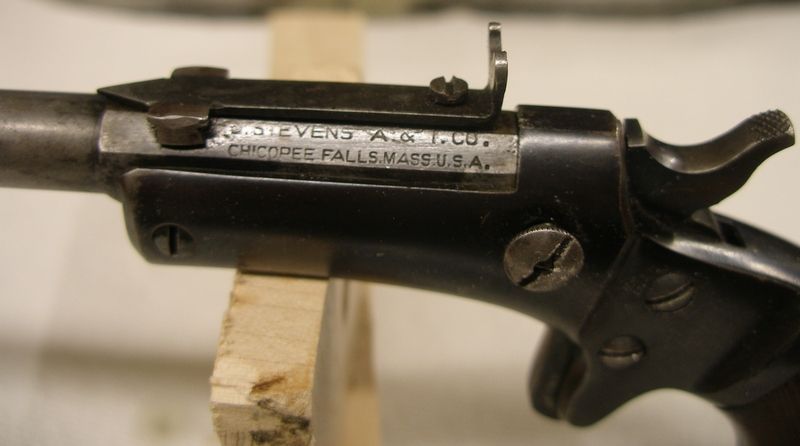
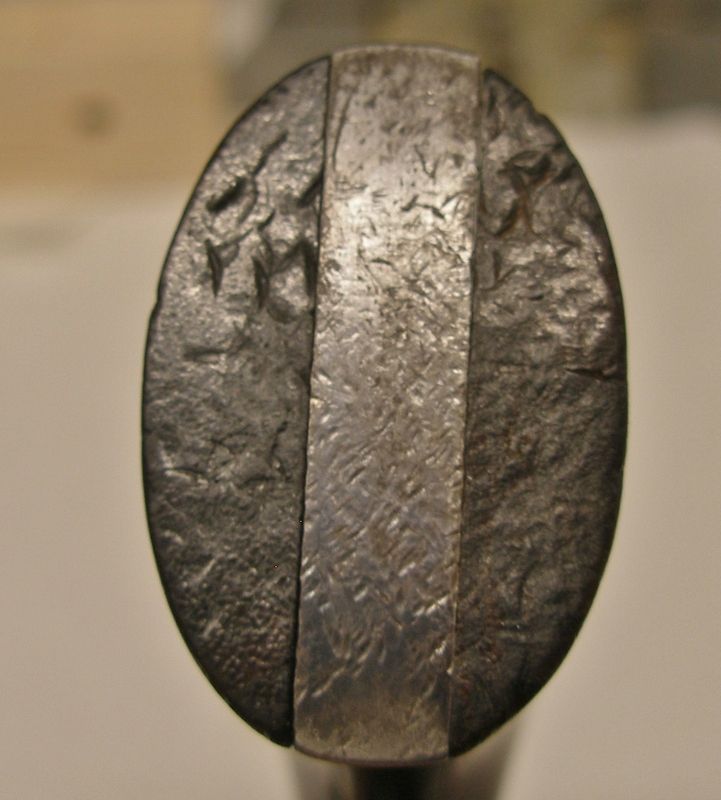
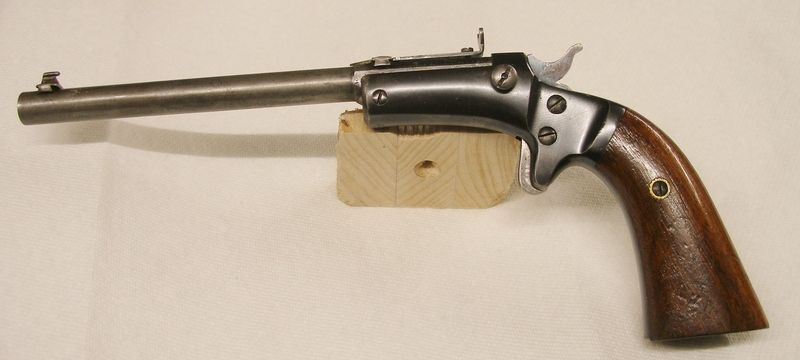
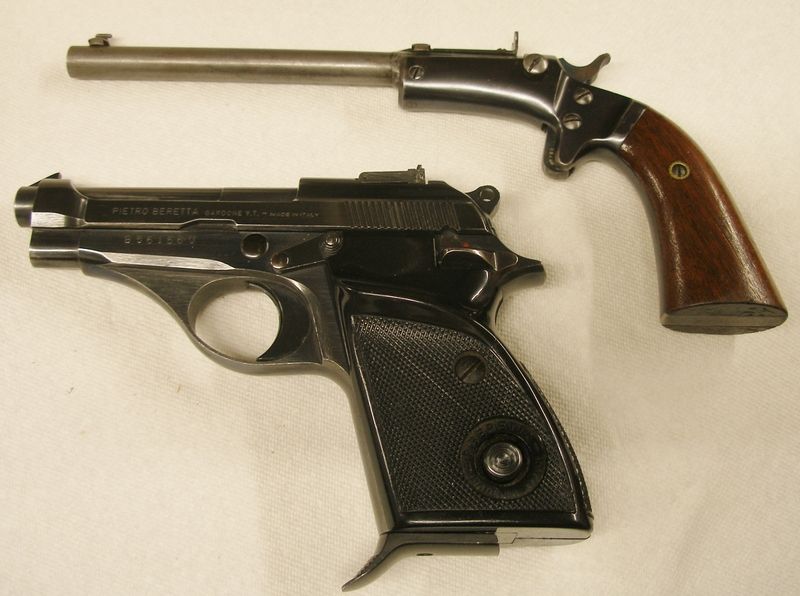
I picked this Stevens model 43 .22lr pistol up at a garage sale about a month ago. Owner wanted $200.00 for it. After looking at for a while I decided to buy it and got it for $185.00. It is in very good condition, tight action, very good bore, exterior metal and wood are good for a 110 year old gun. Haven't done anything to it. I did fire it at 20 yards, held 20 low velocity shots within a 2.5" group. It is very small, I have a picture of it with a Beretta Mod. 70 .22lr pistol which is also small. Barrel is 6" long and it weighs 10 ounces.
I new it was old, but not how old. The butt sold me. You see people in western movies nailing and tacking flyers with the butt of their pistol. This butt was used that way.






Last edited:


